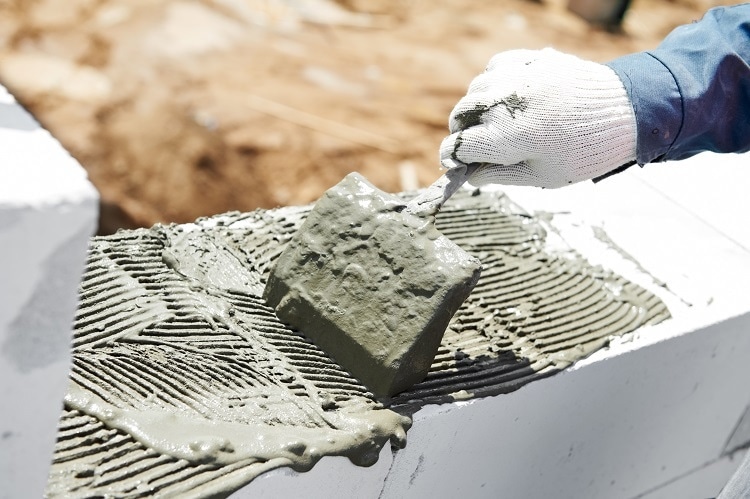
Dmitry Kalinovsky/Shutterstock
Lime is one of the oldest building materials in existence, with it being used for many thousands of years. Some of the world’s greatest architectures have been made using lime, with the giant sandstone blocks of the Pyramids of Giza in Egypt being held together with lime mortar. While lime is a mineral composed of many chemical constituents, it can be used to make many different types of mortar.
The name ‘lime’ originates from the old English word ‘lim’ which means sticky. Lime itself is a type of inorganic mineral that contains various oxides and hydroxides containing materials. The most common chemicals which are present in lime are calcium hydroxide and calcium oxide, depending on the type of lime used. It is a material that is produced from limestone, i.e. calcium carbonate. The limestone can come from many sources (although mostly from mining deposits) and is heated and calcinated to form quicklime (calcium oxide lime). From here, the quicklime can be hydrated to form slaked lime (calcium hydroxide lime). These are the two most basic forms of lime. The different types of lime can then be mixed with other constituents to create various mortars that can be used in the construction of buildings.
Hydraulic Lime
There are two main types of hydraulic lime. Hydraulic lime and natural hydraulic lime. Hydraulic lime is a material that consists of lime alongside various other human-made materials, such as cement, slag from blast furnaces, limestone filler, and other materials which react to harden the lime mortar. This type of hydraulic lime is often seen as a lower grade than natural hydraulic lime, as there are no legal requirements to state which types of materials (or their quantities) have been added in with the lime.
Natural hydraulic lime is the more common type of hydraulic lime. Natural hydraulic lime is formed from limestone materials which contain naturally occurring impurities, namely various clays and silicates. Natural hydraulic limes come in different forms depending on how strong they are. They are typically formed in damp conditions, where they are in the presence of water for at least 72 hours. To make the mortar, sand is added in a ratio of between 2:1 and 3:1 with natural hydraulic lime, and the ratio varies depending on the application. Depending on the strength of the natural hydraulic lime, they can be used in plastering or rendering applications, as well as in masonry, wall copings, chimneys and in flooring. Natural hydraulic lime mortar is not as breathable as lime putty mortar, but it sets much quicker, so is ideal for quick-setting jobs.
Lime Putty
Lime putty is made from quicklime, where the quicklime can be present in a form ranging from a fine powder to large lumps. Regardless of the form, quicklime is fairly reactive, and water is used to create the lime putty, much in the way that water is used to create slaked lime. Lime putty is often used as a binder in lime mortar and is a non-hydraulic form of lime.
Lime putty is created when enough water is added to the quicklime to turn it into a liquid. This liquid then undergoes a maturation process over three months, where it forms a lumpy, cottage-cheese like consistency. The lime putty is then cured by carbonation in the air once it is dry. The lime putty forces out any residual water to the surface of the container it is being stored in, which enables it to form its own air-tight barrier. Mortars which use lime putty tend to take longer to set than those made of hydraulic lime.
Other Types
One other type is hydrated lime. Hydrated lime is similar to lime putty, in that is created by slaking quicklime. However, just enough water is used so that it stays as a powder, rather than becoming a liquid. It’s seen as a lesser form of lime putty and is often used in cement as a plasticiser additive, as it is not strong enough to be used on its own as a binder.
Another type of lime is formulated lime. Formulated lime is a lime product that is composed of either hydrated or natural hydraulic lime which has been mixed with the lower quality hydraulic lime or a pozzolanic material—a siliceous or aluminous material that reacts with calcium hydroxide and water to produce chemical compounds with cementitious properties. Other additives, such as cement, are limited by law in these formulations.
References and Further Reading
Using Lime in Building Techniques - Sustainable Build
Different Types of Building Limes - Mike Wye and Associates
Disclaimer: The views expressed here are those of the author expressed in their private capacity and do not necessarily represent the views of AZoM.com Limited T/A AZoNetwork the owner and operator of this website. This disclaimer forms part of the Terms and conditions of use of this website.